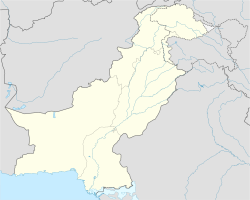History
According to the legends, during the 14 year exile, Lord Ram, his wife Sita and his brother Lakshman arrived this region in the Margalla Hills and drank the water from the pond here. [1]
The current temple structure was built by Raja Mann Singh around 1580. For centuries, Hindus travelled far and wide to worship at the temple, staying in an adjoining Dharamshala (rest house for pilgrims). According to official records of the Rawalpindi Gazetteer dating back to 1893, a fair was held each year at a pond near the site called "Ram Kund" to commemorate that Ram and his family had once sipped water from it. However, after the Partition of India in 1947, the temple building was no longer used as a place of worship. In 1960, the building was used as a girls' school for the local people. In 2006, it was converted into a tourist site. [3]
Before Partition, annual Hindu fair used to be conducted during Baisakhi, which will be attended by around 8,000 people. [4]
Current Situation
In 2006, it was turned into a tourist site by the Capital Development Authority(CDA). As a result, all the idols have now been removed [5] [2] and the religious carvings were painted over by the CDA. The dharamshala has also been converted into a public toilet. [3]
The Hindu community of Islamabad has been demanding to make the temple operational again. The PTI lawmaker Lal Chand Malhi argued that the tourists disregard the sanctity of the temple by walking inside the holy sanctum with their shoes. [3] According to the Hindu community, the sanctity of the 3 temple ponds were also violated as the CDA has handed over them to restaurants serving meat dishes. [1]
This page is based on this
Wikipedia article Text is available under the
CC BY-SA 4.0 license; additional terms may apply.
Images, videos and audio are available under their respective licenses.




